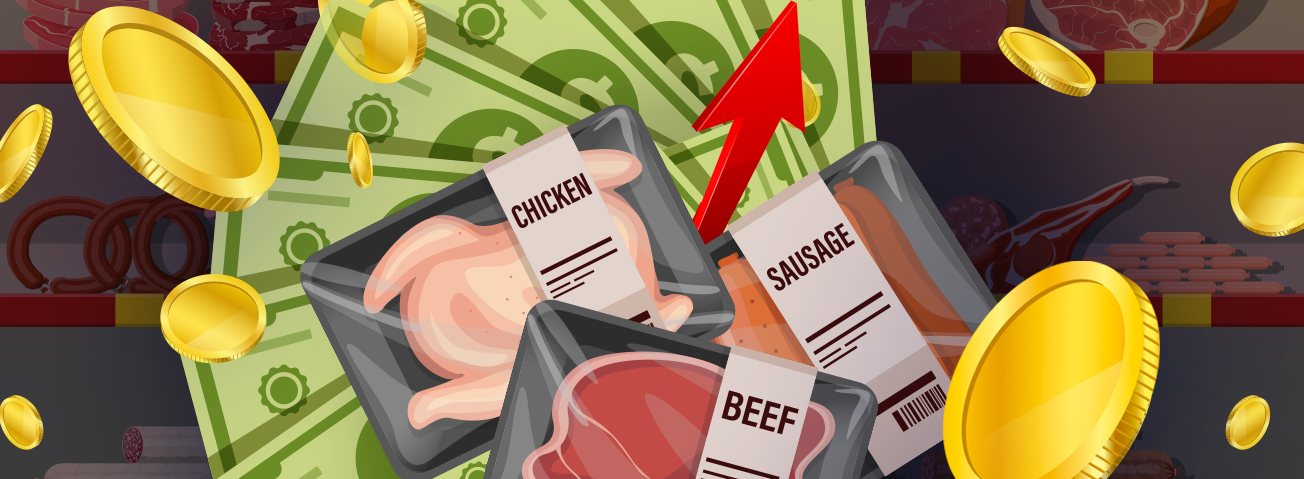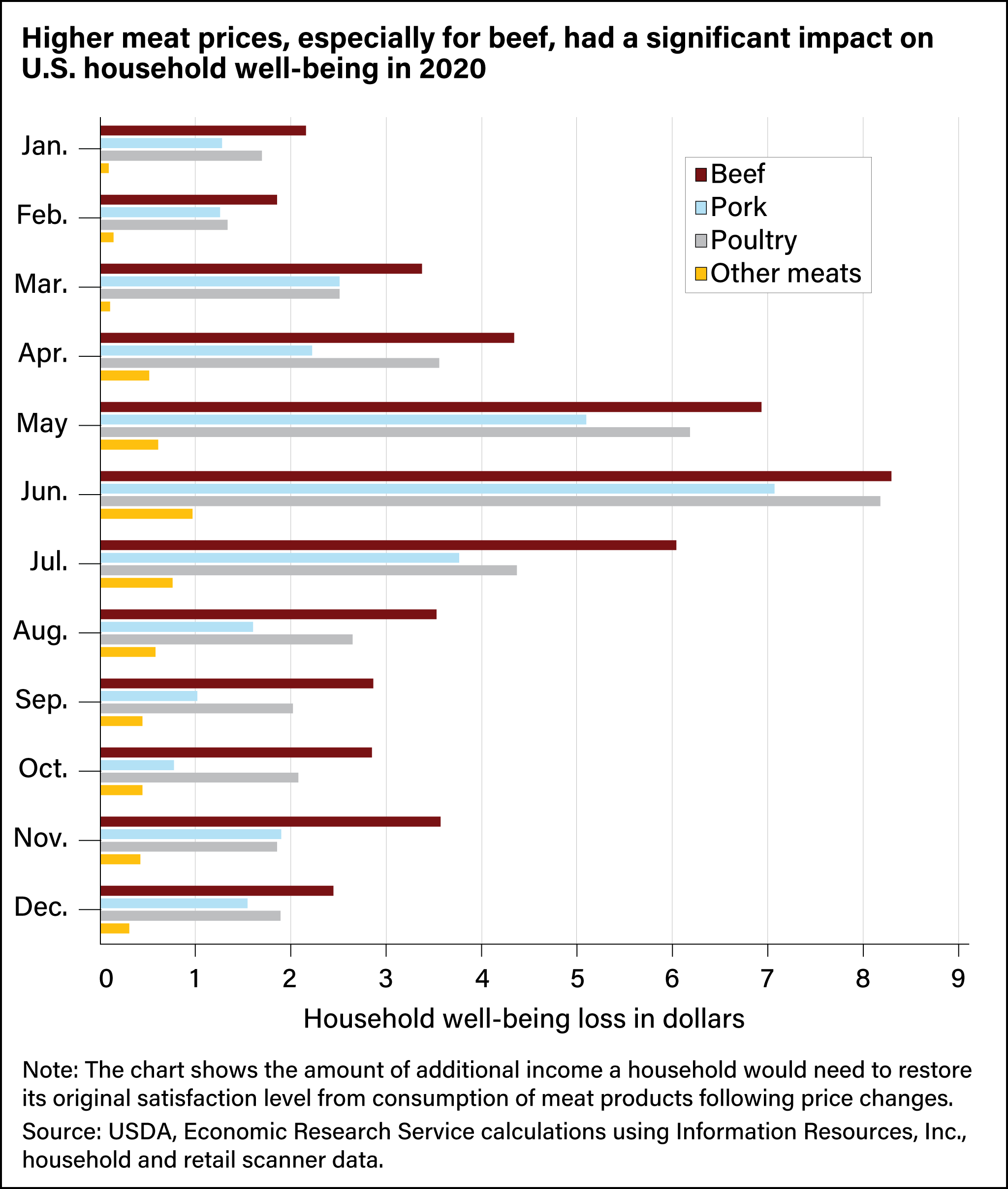
Higher Retail Meat Prices Reduced Household Economic Well-Being During the COVID-19 Pandemic
- by Xiao Dong
- 10/3/2022
Retail meat prices rose almost 7 percent in 2020 as the Coronavirus (COVID-19) pandemic changed the economic landscape in the United States. Meatpacking plants were forced to close temporarily during spring and summer of 2020 when workers tested positive for COVID-19, while other plants had to reduce capacity. This disruption led to a drop in U.S. meat production and increased meat prices for U.S households. At the same time, restaurant restrictions put in place during the pandemic shifted consumer purchasing patterns toward more food at home, leading to an increase in the amount of meat households bought from grocery stores.
Using scanner data purchased from Information Resources, Inc. (IRI), researchers from USDA, Economic Research Service (ERS) compared retail meat prices, expenditures, and the amount purchased in 2020 with those in 2019. Furthermore, the researchers estimated how much households lost in economic well-being (also referred to as welfare in the field of economics) in 2020, compared with 2019, because of the higher meat prices.
From 2019 to 2020, the average retail price paid for meat in the United States increased 6.9 percent on a dollars-per-pound basis. Price changes varied for specific meat types. Beef prices increased the most at 8.9 percent, followed by pork at 5.7 percent, other meats (mainly lamb and mutton) at 5.3 percent, and poultry at 4.9 percent. U.S. households bought 7.2 percent more meat to consume at home in 2020 than they did in 2019. The combination of higher retail prices and larger amounts purchased meant consumers increased their spending on all meat (including for at-home consumption and away from home) by 14.5 percent in 2020.
Even though U.S. households generally were able to maintain their overall level of meat consumption in 2020, higher meat prices at retail stores decreased their economic well-being. This loss was higher during the spring months, when Coronavirus affected operations at packing plants the most, and peaked in June 2020. Higher meat prices reduced U.S. household economic well-being in June 2020 by $24.51 per household compared with June 2019. Higher prices for beef accounted for $8.30 of loss in well-being that month. Higher prices for poultry accounted for $8.18 of well-being loss, and pork price increases accounted for $7.07 in loss. In December 2020, U.S. household economic well-being was reduced by $6.19 per household from December 2019 because of increases in retail meat prices. Higher prices for beef, poultry, and pork accounted for $2.44, $1.89, and $1.54 of this drop.
This article is drawn from:
- Dong, D., Stewart, H., Dong, X. & Hahn, W. (2022). Quantifying Consumer Welfare Impacts of Higher Meat Prices During the COVID-19 Pandemic. U.S. Department of Agriculture, Economic Research Service. ERR-306.
You may also like:
- Food Prices, Expenditures, and Establishments. (n.d.). U.S. Department of Agriculture, Economic Research Service.


